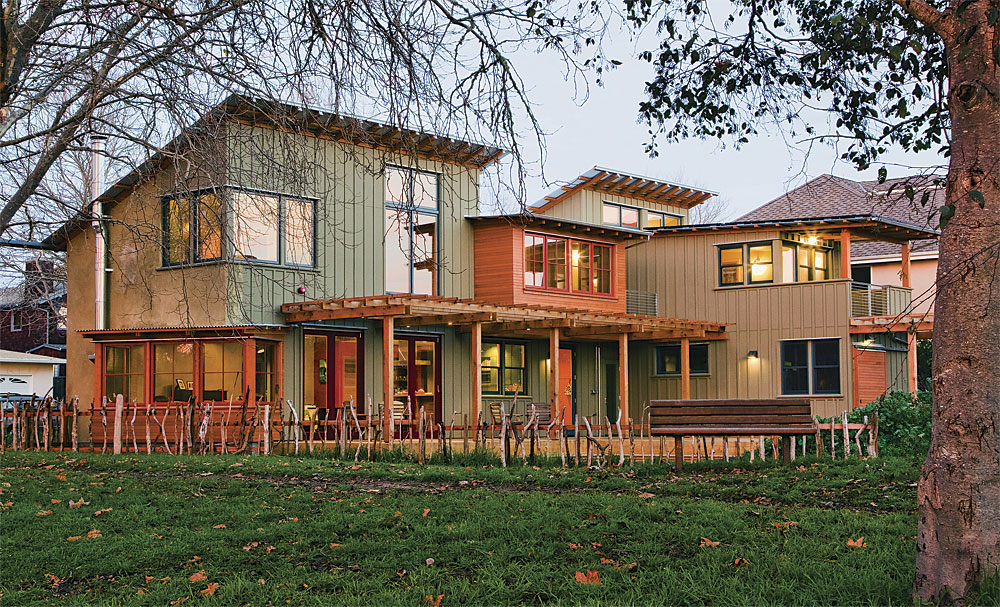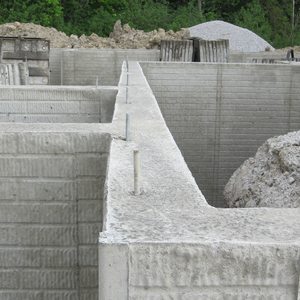
Because the hosts of the BS* + Beer Show all love to read, we thought we would celebrate the authors in our industry by adding a book club to the show every few months. We will kick it off with Bruce King’s “The New Carbon Architecture.” Here, show hosts Michael Maines, Travis Brungardt, and Emily Mottram share some general thoughts on the book in hopes of getting more GBA readers to pick up a copy in advance of September 24, when the author will join the show.
Kiley Jacques: For people unfamiliar with it, how would you summarize this idea of a “new carbon architecture”?
Michael Maines: It’s how we need to build if we are going to maintain life on Earth. Some say that is hyperbole but the scientific studies and reports I read indicate that it’s a serious issue. In the design and construction industry we have a unique opportunity and responsibility to address carbon emissions through the buildings we design and construct.
Travis Brungardt: I agree. The book starts with Bruce King pulling the fire alarm, then the other authors help us understand just what the fire is and how to extinguish it using the tools at our disposal.
Emily Mottram: We in the design/build community have been so focused on operational energy that we forgot to look at the impact of the materials themselves. Just like in a grocery store where a consumer is separated from the farming methods used to produce the food they buy, I think the construction industry has ignored the life of the products being used and their impact. This is a call to be more thoughtful about everything we use because we now know that some of these products have a much bigger impact than their operational value.
KJ: In your opinion, what is the real value of this collection of essays?
MM: Getting people thinking and talking. Aside from Greta Thunberg, I don’t know of any single source who has been more influential in getting the word out about what we need to do than Bruce with this book.
EM: Awareness. I think people are “aware” that climate change is an issue but during our busy lives, it’s easy to say, “It’s important but I don’t have time to think or do anything about it.” This collection of essays is an easy way to read just a little bit, and then become engrossed in an issue that is far more important than people realize.
TB: When I was younger, I rushed to solve problems without spending much time imagining what might be possible if I removed the limitations. Working with existing solutions, known methods, and familiar materials got us to where we are today. Our remaining time requires an openness to new approaches . . . removing the limitations and using every available tool at our disposal in treating the sickness we’ve created. The value of this book is its ability to spark the imagination and spur excitement that turns into action.
KJ: What were the top three takeaways for you?
MM: Embodied carbon is a much bigger deal than most people think it is. Materials and processes exist to create carbon-storing buildings now, and it is possible to make them part of the solution rather than a big part of the problem.
TB: The depth of the statistical analysis that illustrates the dire straits in which we’ve put ourselves was my first takeaway. I was then encouraged that wood could be such a big part of the solution—particularly cross-laminated timber (CLT). The options presented in the book for replacing concrete left me feeling more positively about our future than I did when I first started reading it.
EM: We have plenty of options for working with carbon-storing materials. When we are talking about building, we need to change the general mindset from one focused on the cheapest option to one concentrated on a different value proposition. We spend so much money on developing petroleum-based materials without thinking about what that means for the environment. We need to be more careful, thoughtful, and conscientious about the way we build.
KJ: Of the building strategies/systems/products discussed, which do you think have the potential for replicable, scalable solutions to the climate crisis?
MM: Reducing the use of concrete, choosing reduced-Portland cement concrete—if necessary—and decreasing reliance on the use of foam insulation are the low-hanging fruits I’ve been going after since reading the book—they are the ones I think anyone could adopt. I like the idea of building with straw and other carbon-sequestering materials and want to try them myself, but they seem to have more challenges to mass adoption.
TB: I see CLT and CarbonCure as the frontrunners for mass adoption—especially in the commercial realm, where we could see a massive swing.
KJ: Why should people read this book?
MM: To learn why embodied carbon matters, to be inspired to do something about it, and to get some ideas on what they can do about it.
TB: Mike nailed it. I didn’t understand how serious things had gotten before I read this, and I wasn’t focused on being part of the solution. If everyone saw the opportunity we face and considered the myriad options for course-correcting, then we could really have a shot at turning the ship around before we hit an iceberg. (Iceberg is a crummy analogy for rising global temperatures but you get the gist.)
EM: For the education it provides. Embodied carbon isn’t just something the hippie building-science community is touting—it has a major impact on what happens in the future of building. I’d rather know and be proactive than find out 20 years from now that my contributions to the built environment had negative environmental impacts.
_______________________________________________________________
-You can reach Kiley Jacques at [email protected].
Weekly Newsletter
Get building science and energy efficiency advice, plus special offers, in your inbox.















One Comment
Wow, "The New Carbon Architecture" sounds like a fascinating book! It's exciting to see how innovative approaches in architecture can help tackle the carbon emissions challenge. This book seems to provide valuable insights into the potential of sustainable building materials and techniques. I'm particularly interested in learning more about how carbon can be used as a resource rather than a liability. Thanks for sharing this informative article!
On a related note, if you're looking for assistance with creating a powerful PowerPoint presentation, I recommend checking out Writers Per Hour at https://writersperhour.com/do-my-powerpoint. They offer professional PowerPoint services that can help bring your ideas to life and engage your audience effectively. Good luck with your presentation!
Log in or create an account to post a comment.
Sign up Log in